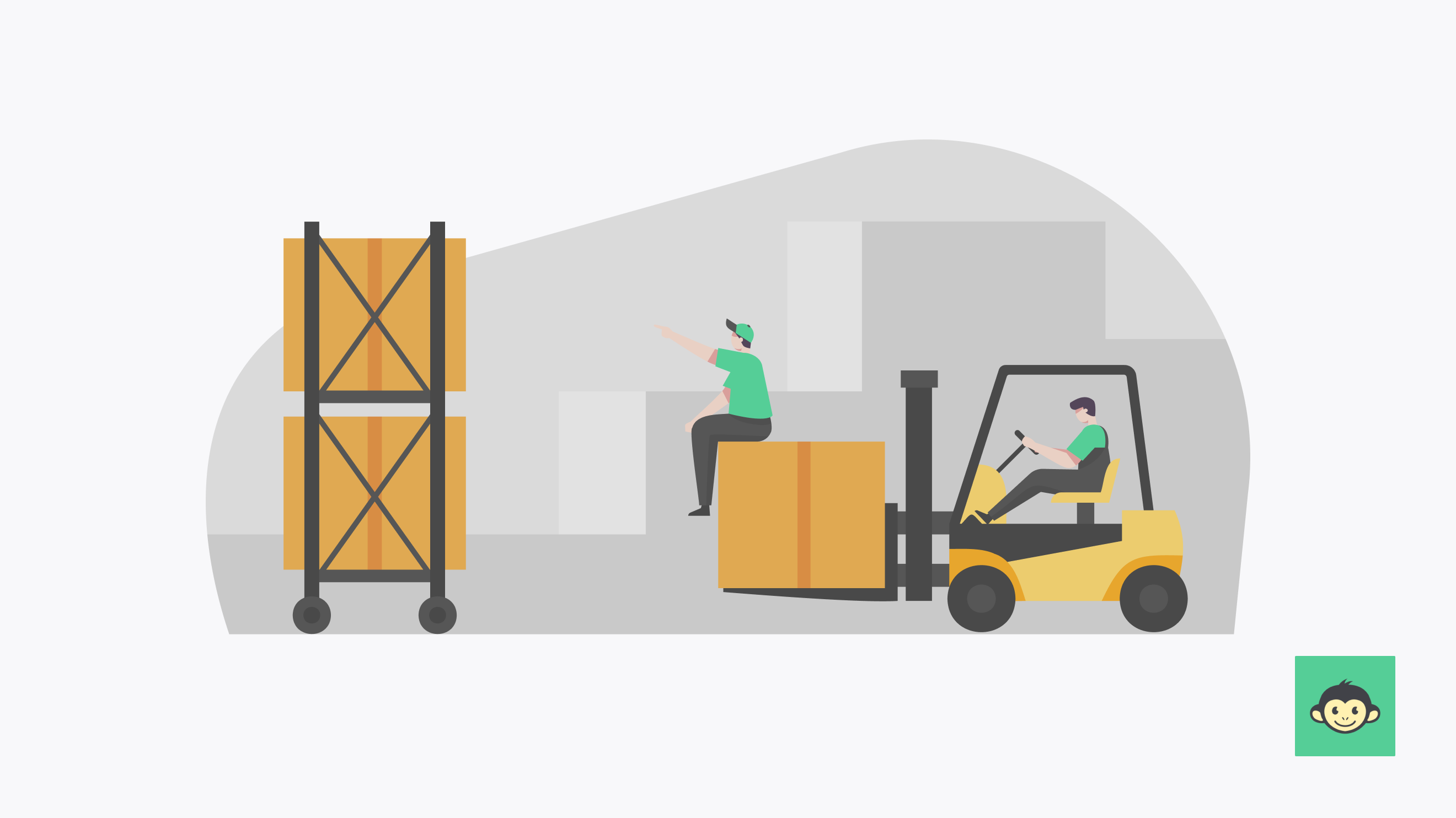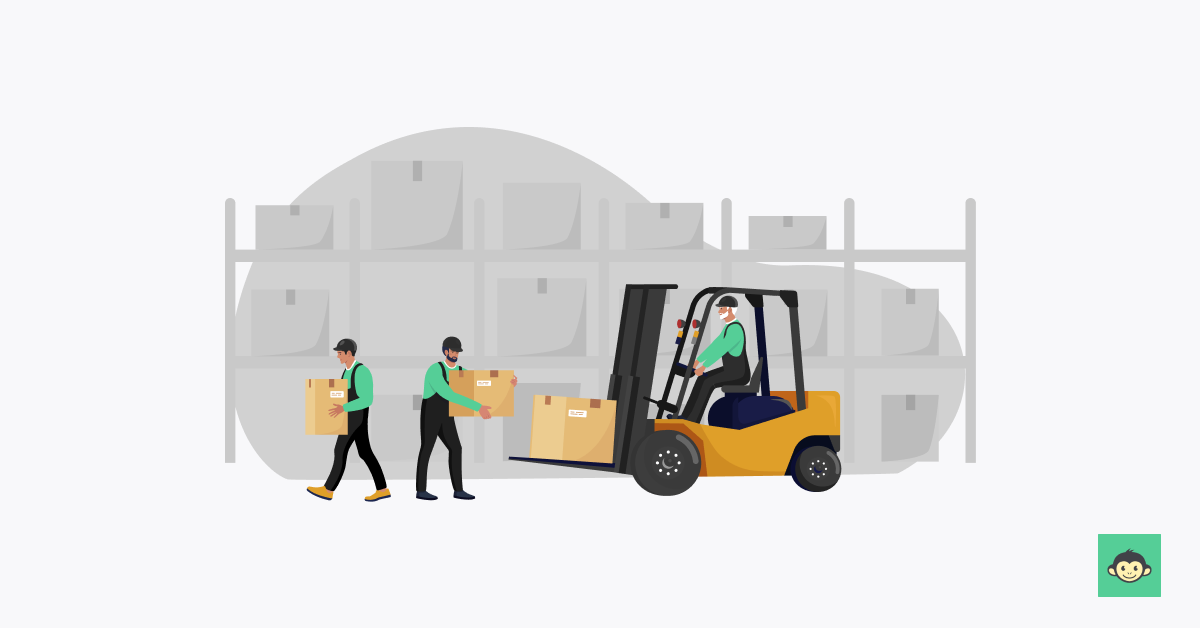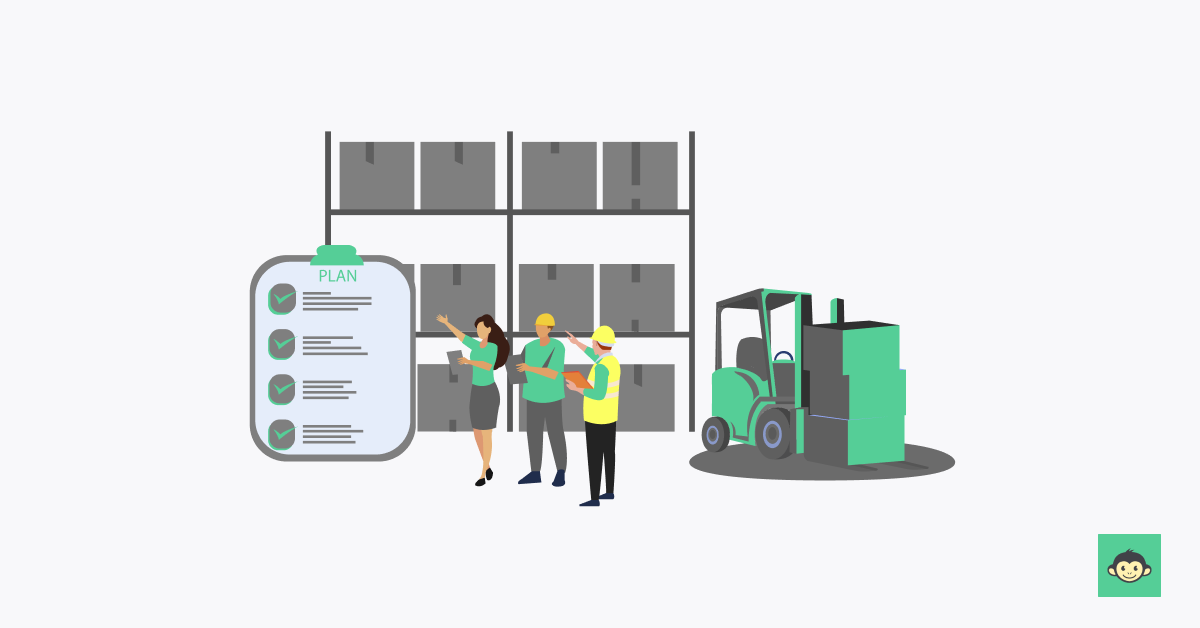7 Employee engagement ideas for warehouse workers

If you run an e-commerce business or even any business where supply chain management plays a key role, you must have interacted with or come across warehouse employees who go above and beyond to keep the show running.
Although these employees are often neglected when it comes to employee engagement, as even in this time and age, some leadership teams consider employee engagement only as a white-collar initiative.
According to Gallup, only 30% of warehouse employees in the United States feel engaged at work.
Now, with that said, let’s break the myth and show you how keeping your warehouse employees engaged can improve your organizational growth, improve employee retention and, most importantly make them feel happy and more productive.
Table of contents:-
- Why is engaging warehouse employees important?
- How do you engage warehouse employees?
- How to ensure your warehouse workers are feeling valued?
- How to measure and improve employee engagement for your warehouse employees?
- Conclusion
Why is engaging warehouse employees important?

Engaging warehouse employees is of utmost importance in the context of the warehouse business. Warehouses often face unique challenges that can be mitigated through employee engagement strategies.
One key reason for engaging warehouse employees is to boost productivity. In a warehouse setting, efficiency and timely order fulfillment are crucial. Engaged employees are more motivated to perform their tasks accurately and efficiently, ensuring that orders are processed quickly and accurately.
By providing recognition and incentives, implementing performance tracking systems, and fostering a company culture of accountability, warehouses can maximize their productivity and meet customer demands effectively.
Safety is another critical aspect of the warehouse business, and an engaged employee play a vital role in maintaining a safe working environment.
Warehouses are filled with potential hazards, such as heavy machinery, stacked inventory, and logistical challenges. Engaged employees are more likely to adhere to safety protocols, actively identify potential risks, and report any safety concerns promptly.
By involving employees in safety, adequate training programs, encouraging open communication, and recognizing their contributions to maintaining a safe workplace, warehouses can reduce accidents and injuries, minimizing downtime and associated costs.
Warehouse operations heavily rely on teamwork and collaboration. Engaged employees foster a positive team environment by actively participating in collaborative efforts. They communicate effectively, share knowledge and expertise, and support their colleagues.
This collaboration enhances overall warehouse efficiency, reduces errors, and improves order accuracy. Implementing team-building activities, fostering cross-training opportunities, and providing platforms for open communication can strengthen teamwork and collaboration among warehouse employees.
Engaging warehouse employees is also essential for innovation and process improvement. Employees who feel valued and empowered are more likely to contribute their ideas and suggestions for optimizing warehouse processes.
By leveraging their frontline expertise, warehouses can identify inefficiencies, implement innovative solutions, and streamline workflows. Regular feedback sessions, suggestion programs, and process improvement initiatives can encourage employee participation and drive continuous improvement in warehouse operations.
Lastly, engaging warehouse employees directly impacts customer satisfaction. Engaged employees understand the importance of delivering high-quality customer service. They are committed to meeting customer needs and providing a positive experience.
Investing in employee engagement initiatives tailored to the specific needs of the warehouse industry can lead to improved operational efficiency, reduced costs, and, ultimately, increased customer loyalty and business growth.
How do you engage warehouse employees?

Engaging warehouse employees requires a targeted approach that considers the specific challenges and dynamics of the warehouse business. Here are some strategies to effectively engage employees in the warehouse:
- Training and development: Train employees with the necessary skills and knowledge to perform their tasks effectively. Offer opportunities for professional development and advancement within the warehouse, demonstrating a commitment to their growth and career progression.
- Open communication channels: Establish open lines of communication to encourage employees to voice their concerns, share ideas, and provide feedback. Regular team members' meetings, suggestion boxes, and one-on-one discussions with supervisors can facilitate effective communication and create a supportive work environment.
- Recognition and rewards: Implement an employee recognition program to acknowledge and reward exceptional performance. Recognize individual and team achievements publicly, such as through bulletin boards or internal newsletters. Offer incentives, such as bonuses or gift cards, to motivate employees and show appreciation for their hard work.
- Safety programs: Prioritize employee safety by implementing comprehensive safety training programs. Involve employees in safety committees or task forces to actively engage them in identifying and addressing safety concerns. Provide ongoing safety reminders, conduct regular safety audits, and celebrate safety milestones to reinforce a culture of safety.
- Team-building activities: Organize team-building activities and events to foster camaraderie and collaboration among warehouse employees. These employee engagement activities could include team-building games, off-site outings, or social events that allow employees to connect and build relationships outside of their usual work routines.
- Empowerment and involvement: Involve employees in decision-making processes by seeking their input on operational improvements, process changes, and workflow optimization. Encouraging employees to take ownership of their work and provide them with autonomy and responsibility in their roles.
- Wellness initiatives: Promote employee well-being by offering wellness programs and resources. This could include health screenings, gym memberships, or stress management workshops. Taking care of employees' physical and mental well-being demonstrates a commitment to their overall welfare.
Remember, engaging warehouse employees is an ongoing process that requires consistent effort and adaptability. By implementing these employee engagement strategies, warehouses can create a positive work culture, improve employee satisfaction, foster teamwork, and ultimately enhance the overall success of their operations.
How to ensure your warehouse workers are feeling valued?

Ensuring that warehouse workers feel valued is essential for their job satisfaction, engagement, and overall well-being. Here are some strategies to help warehouse businesses create an environment where employees feel valued:
Involve employees in decision-making: Include warehouse workers in discussions and decisions that affect their work and well-being. Seek their input on process improvements, operational changes, or safety measures.
By involving them in decision-making, you demonstrate that their expertise and insights are valued, leading to a greater sense of ownership and engagement.
Offer competitive compensation and benefits: Ensure that warehouse workers are compensated fairly for their work. Regularly review and update compensation packages to remain competitive in the market.
Additionally, provide a comprehensive benefits package that includes healthcare, retirement plans, and other perks to demonstrate that their well-being is valued.
Seek employee feedback and act upon it: Conduct regular employee engagement surveys or feedback sessions to understand their concerns, suggestions, and needs. Act upon the feedback received and communicate any changes or improvements that have been implemented as a result. This demonstrates that their opinions are valued and their voices are heard.
Foster a positive work-life balance: Recognize the importance of work-life balance for warehouse workers. Implement policies and practices that promote flexibility, such as flexible scheduling or remote work options, where applicable.
Encourage employees to take breaks and vacations to recharge and maintain their well-being. This demonstrates that their personal lives and well-being are valued.
Encourage professional relationships and networking: Encourage warehouse workers to build professional relationships and networks within the industry. Support participation in industry conferences, workshops, or networking events. By facilitating these opportunities, you show that you value their professional growth, connections, and exposure to industry trends and best practices.
Workplace accident insurance: Warehouse workers often engage in physically demanding tasks, such as lifting heavy objects, operating machinery, or working at heights. These activities carry inherent risks, and the potential for accidents and injuries is higher compared to other job roles.
Having workplace accident insurance specifically tailored to the needs of warehouse employees provides them with a sense of security and peace of mind.
How to measure and improve employee engagement for your warehouse employees?

Measuring and improving employee engagement in a warehouse business is crucial for fostering a motivated and productive workforce. Here's a brief overview of how to accomplish this:
Surveys and feedback: Conduct regular employee surveys or engagement assessments specifically tailored to the warehouse environment. Ask targeted questions about job satisfaction, communication, safety, teamwork, and opportunities for growth. Analyze the feedback to identify areas of improvement and take action accordingly.
Key performance indicators (KPIs): Define and track relevant KPIs to measure employee engagement, such as productivity levels, error rates, absenteeism, or turnover rates. These indicators can provide insights into the overall engagement and job satisfaction of warehouse employees.
Continuous improvement initiatives: Involve employees in process improvement initiatives to engage them in identifying and addressing inefficiencies. Encourage their input and implement their ideas where feasible, demonstrating that their opinions and contributions are valued.
Performance feedback and coaching: Provide regular performance feedback and coaching sessions to employees. This helps them understand expectations, identify areas for improvement, and develop their skills. Constructive feedback and guidance
Career development pathways: Provide clear career development pathways within the warehouse. Offer opportunities for advancement, promotions, and additional responsibilities. Employees who see a future and growth potential in their roles are more engaged and motivated.
Conclusion
Now that you have seen why you should make sure that your warehouse employees should feel engaged, it is essential that you realize why they are the backbone of your business and get started with the ideas and strategies we’ve discussed today to engage your warehouse employees.
But is it that easy to gather employee feedback data, make sure they are continuously listened to and retain them manually?
Fret not, this is where you need a complete employee experience platform for your warehouse employees, which is personalized to listen to their needs, is accustomed to understanding their pain points and offers leaders to intuitively set up a listening mechanism, especially for your warehouse employees.
Enter CultureMonkey.
Try our employee engagement tool today and see how it can help you listen to your warehouse employees, analyze their feedback in real-time and help you take swift actions on their feedback to improve and sustain employee engagement and increase productivity.



